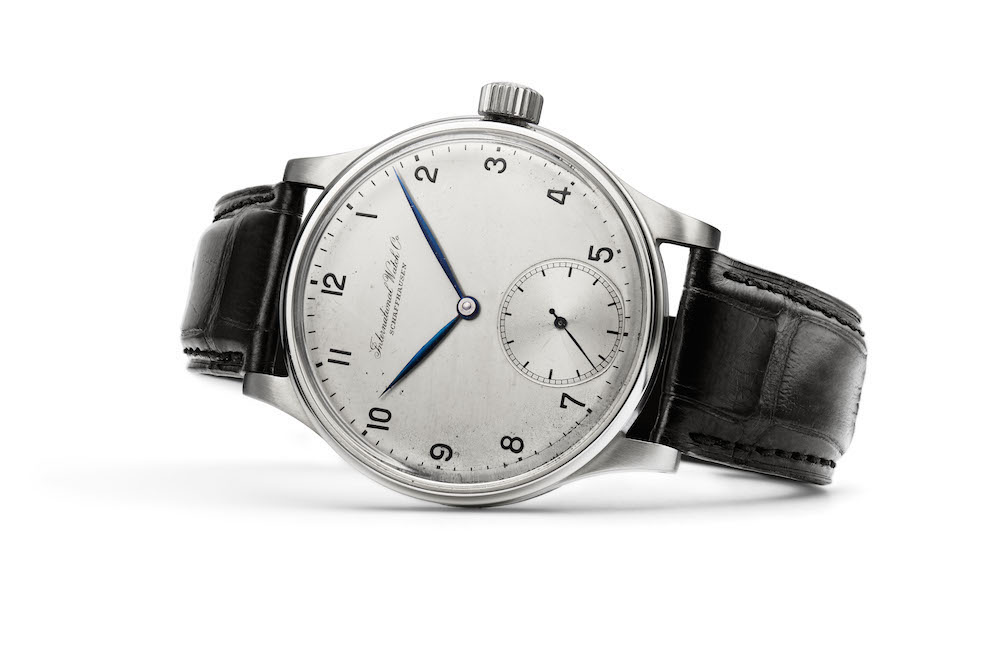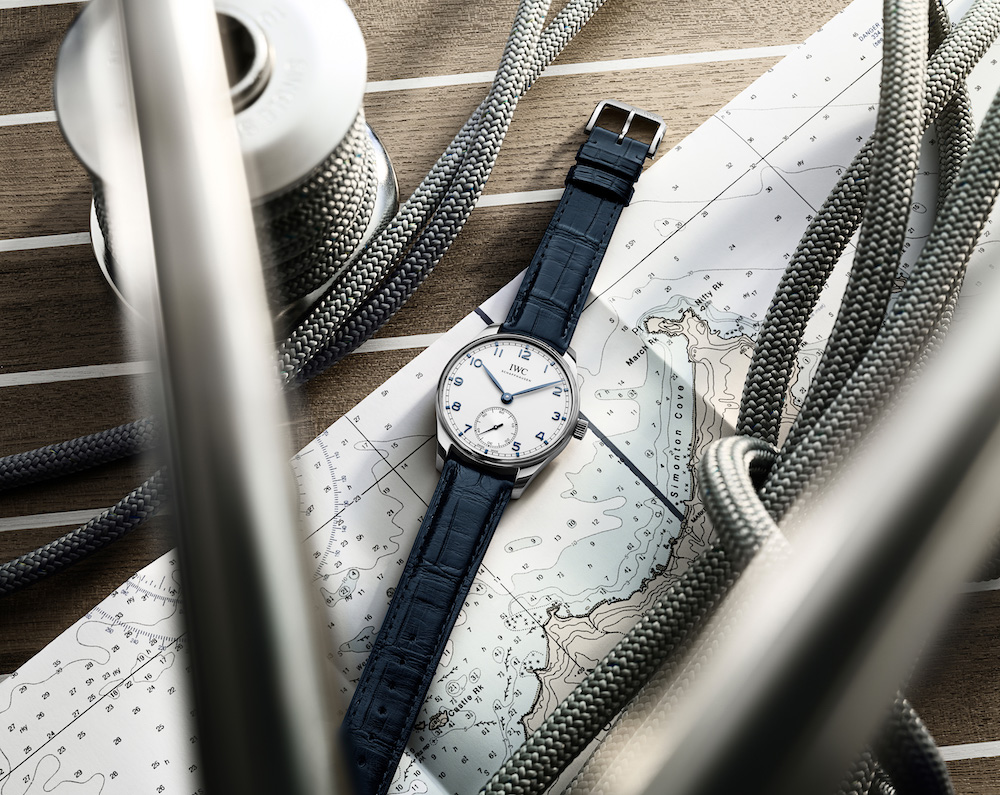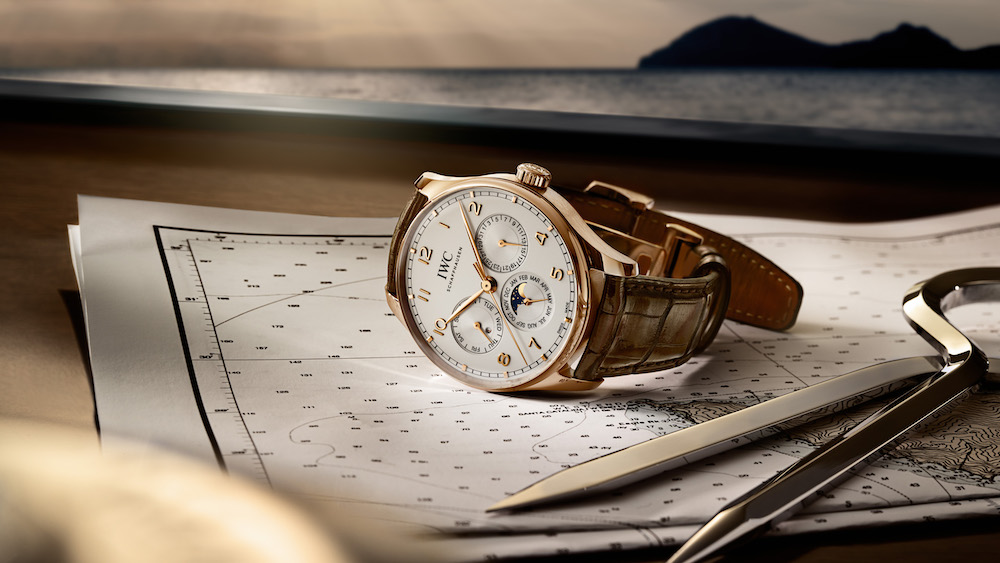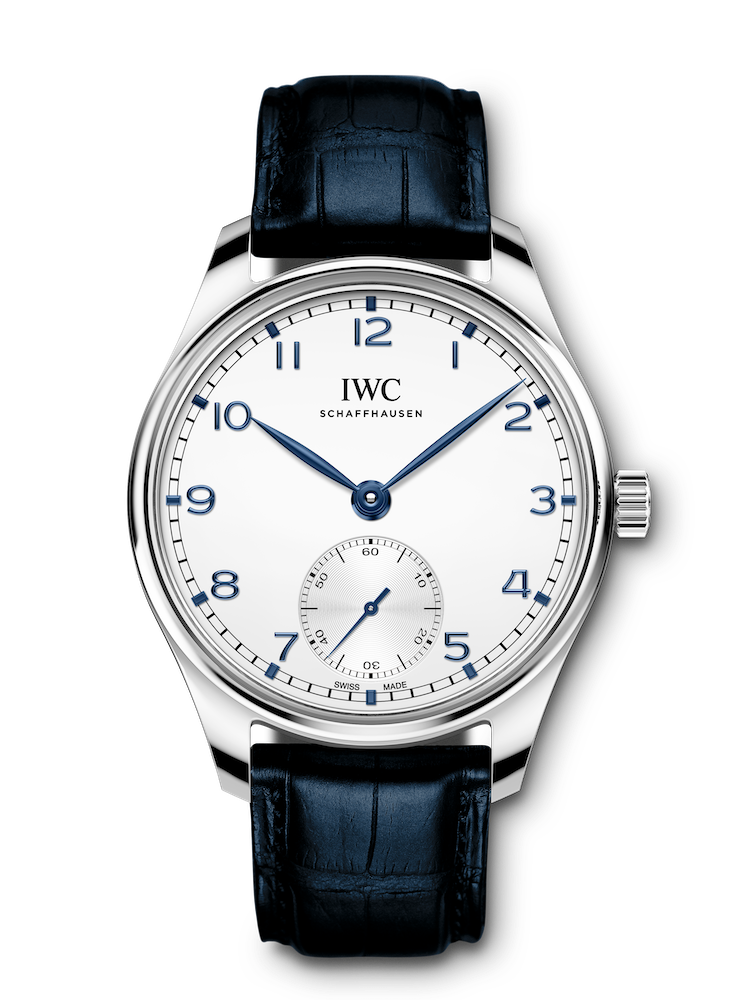The Portugieser needs no introduction: it not just an iconic watch but a piece of horological history. Its story began in the late 1930s when two Portuguese entrepreneurs asked IWC for a practical, easy-to-read and accurate watch. At the time, the maison was supplying the Royal Navy and drew on that experience. Now the Portugieser is back with a new sea-influenced collection as IWC CEO Christoph Grainger-Herr tell us in this exclusive interview.

2019 was the year of the “Silver Spitfire – The Longest Flight”. 2020 celebrates navigation. Earth, air and water are the Maison’s touchpoints. Why?
It’s an interesting point. The common denominator for our Pilot’s Watches and the Portugieser is, indeed, navigation: in the air and on water. IWC’s Pilot’s Watches were developed more than 80 years ago to assist pilots to locate their position using celestial navigation. This also led to their now iconic design in the style of an easy-to-read cockpit instrument. The Portugieser has a similar background because it was inspired by deck observation watches used to calculate longitude on ships. The connection between IWC and motorsports is based on the parallels between watchmaking and the world of racing: world-class engineering, solving complex technical challenges, teamwork and functional design.

This year the Portugieser collection pays homage to navigation instruments. What links the brand to this tradition?
The Portugieser is inextricably linked to the worlds of sailing and navigation. Reference 325 was developed in the late 1930s as a “marine-chronometer-precision wristwatch”, built on IWC’s reputation for robust precise pocket watches. Its clean functional dial was inspired by the deck observation watches of the time, precision nautical instruments used for navigation. From the onset, the Portugieser combined the qualities of a pocket watch with the precision and easy legibility of a maritime instrument. To honour this heritage and express the connection to the worlds of sailing and navigation, we designed our virtual booth at Watches and Wonders as the deck of a sailing yacht. It’s also a reference to our new partnership with the Italian shipyard Solaris Yachts.

Is it correct to say that the sea has been an extraordinary research laboratory for watchmaking in the past, and that it is still a formidable source of inspiration and communication channel for IWC?
In the context of watchmaking, the sea poses two main challenges: navigation and diving. As mentioned before, the Portugieser was inspired by deck watches used by navies, merchants and sailors to navigate the oceans. Later, the sea and mostly sailing also became a source of inspiration for the Portugieser Yacht Club, which we introduced in 2010 as a sportier subcollection within the Portugieser line. This year, we are launching the third generation of the Yacht Club, with different chronographs as well as the first IWC watch with a tide indication, in a 44mm case. Of course, the sea is also linked to the Aquatimer family of dive watches. IWC has been making these professional instruments since 1967.

Does water plays a central role in the path taken by the Maison? Perhaps it is no coincidence that the Manufacture is near the Rhine?
Yes, absolutely! The IWC story has been linked to water and the quest for new horizons since the start. In 1868, the American watchmaker Florentine Ariosto Jones travelled from Boston to Schaffhausen to establish the International Watch Company (IWC). His visionary idea was to combine the advanced manufacturing methods from his homeland with the skilled craftsmanship of Swiss watchmakers to produce high-quality pocket watches for the American market. One of the main reasons that Jones came to Schaffhausen was the availability of hydropower. Jones used a system of wheels and belts to transmit the energy generated by the water from the Rhine to power the machines in his factory. To this day, we use renewable electricity in making our watches.

Can you tell us something about the new partnership with Orlebar Brown?
Orlebar Brown was founded in 2007 by British photographer Adam Brown. The brand essentially reinvented sporty, elegant leisurewear and its unique tailored approach has proved that men can look good in casual outfits. IWC Schaffhausen and Orlebar Brown are united by their passion for craftsmanship and innovation. As is the case with IWC, Orlebar Brown places great importance on the smallest details. Based on the pattern of a pair of traditional men’s suit trousers, the brand’s popular swim shorts are crafted from 60 elements for a perfect fit. To mark the start of this collaboration, we are introducing the Portugieser Yacht Club Chronograph Edition “Orlebar Brown”. The two brands have also designed a nine-piece “Capsule Collection” of resort wear together.

Is Orlebar Brown passionate about the sea and sailing?
Yes, absolutely! Orlebar Brown has continually expressed that passion. Their signature product is swim shorts. One highlight of the nine-piece clothing collection we will be presenting is a photographic swim short with signature side fasteners, which depicts a Solaris 55 sailing yacht off Porto Rotondo in Sardinia. This spectacular design celebrates not only Orlebar Brown’s passion for sailing but also our recently announced partnership with the Italian boatbuilder Solaris Yacht.





